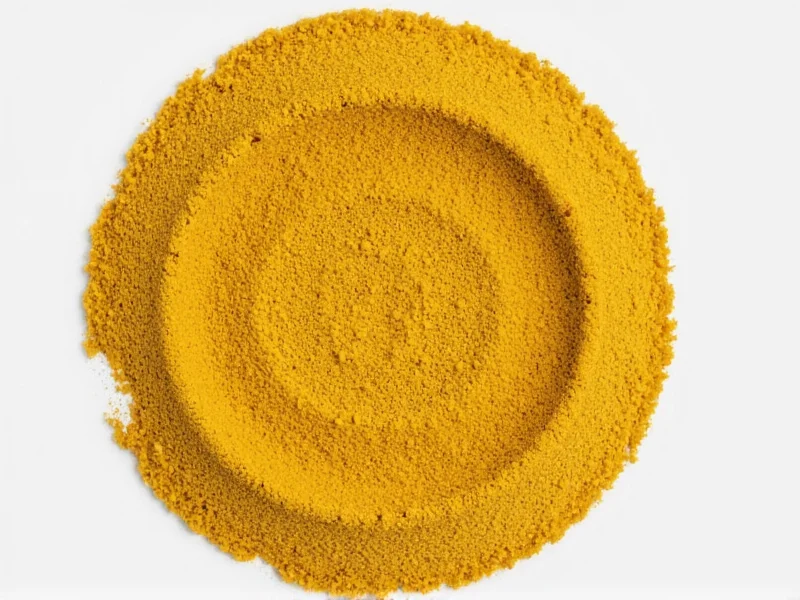Understanding how to properly substitute dry mustard for prepared mustard is essential for home cooks who find themselves without this common condiment. Dry mustard, also known as mustard powder, offers a convenient pantry staple that can effectively replace prepared mustard when used correctly. Unlike prepared mustard which contains vinegar, water, and other ingredients, dry mustard is pure ground mustard seed that requires activation to develop its characteristic flavor.
What Exactly Is Dry Mustard?
Dry mustard consists of finely ground mustard seeds that have been dried and pulverized into a powder. This form of mustard has been used in cooking for centuries before the advent of prepared mustards. The powder contains myrosinase, an enzyme that activates when combined with liquid, creating the pungent compounds we associate with mustard flavor. Different varieties of mustard seeds (yellow, brown, or black) produce powders with varying heat levels and flavor profiles.
Why Substitute Dry Mustard for Prepared Mustard?
There are several practical reasons why you might need to substitute dry mustard for prepared mustard:
- You've run out of prepared mustard but have dry mustard powder in your spice cabinet
- Dry mustard has a much longer shelf life than prepared mustard
- You need to reduce liquid content in a recipe
- You want more precise control over the flavor intensity
- You're making a recipe that specifically calls for dry mustard
The Science Behind Mustard Substitution
The key to successful substitution lies in understanding the chemical reaction that creates mustard's distinctive flavor. When dry mustard powder contacts liquid, the enzyme myrosinase breaks down glucosinolates in the mustard seed, producing the sharp, pungent compounds. Acidic liquids like vinegar accelerate this reaction, while cold liquids produce a milder flavor. The reaction continues for about 10-15 minutes before stabilizing, which is why letting your reconstituted dry mustard sit before using it yields better results.
| Prepared Mustard Amount | Dry Mustard Equivalent | Liquid Needed | Activation Time |
|---|---|---|---|
| 1 tablespoon | 1 teaspoon | 2-3 teaspoons | 10-15 minutes |
| 2 tablespoons | 2 teaspoons | 4-6 teaspoons | 10-15 minutes |
| ¼ cup | 4 teaspoons (1¼ tbsp) | 3 tablespoons | 10-15 minutes |
| ½ cup | 8 teaspoons (2⅔ tbsp) | 6 tablespoons | 10-15 minutes |
Perfecting Your Dry Mustard Substitution Technique
For optimal results when substituting dry mustard for prepared mustard, follow these professional techniques:
Step 1: Measure precisely - Use exact measurements as dry mustard is more concentrated. A kitchen scale provides the most accurate results, but proper measuring spoons work well too.
Step 2: Choose your activating liquid - The liquid you use affects the final flavor. Water creates a milder mustard, vinegar produces sharper results, and wine or beer adds complexity. Match your liquid to your recipe's flavor profile.
Step 3: Allow proper activation time - Don't rush the process. Let the mixture sit for at least 10 minutes to fully develop flavor. For stronger flavor, let it sit up to 30 minutes.
Step 4: Adjust seasoning - Since prepared mustard contains salt and other seasonings, you may need to adjust salt and acidity in your recipe when using dry mustard substitution.
Recipe-Specific Substitution Tips
Different recipes require slightly different approaches when substituting dry mustard:
In salad dressings: Use white wine vinegar as your activating liquid for better emulsion. Consider reducing other acidic ingredients slightly since dry mustard won't contribute as much tang as prepared mustard.
In marinades: Add the dry mustard directly to other dry rub ingredients first, then incorporate wet ingredients. This helps distribute the flavor evenly without premature activation.
In baked goods like cheese straws: You can often use dry mustard powder directly without pre-activating, as the baking process will activate it during cooking.
In meat glazes: For best results, activate the dry mustard with a small amount of the recipe's primary liquid (like apple cider for pork) before incorporating into the glaze mixture.
Flavor Considerations and Adjustments
When substituting dry mustard for prepared mustard, be aware that the flavor profile will differ slightly. Prepared mustard contains additional ingredients like vinegar, salt, and sometimes sugar that affect both flavor and texture. Your substitution won't have the same tanginess unless you adjust other ingredients.
To compensate for these differences:
- Add ¼ teaspoon of vinegar per tablespoon of dry mustard substitution for increased tang
- Include a pinch of salt if your recipe doesn't have other salty ingredients
- For sweeter prepared mustards, add a tiny pinch of sugar to your dry mustard mixture
- For Dijon-style substitutions, add a small amount of white wine to the activating liquid
Common Substitution Mistakes to Avoid
Even experienced cooks make these common errors when substituting dry mustard:
Mistake: Using hot liquid to activate dry mustard
Solution: Always use cold or room temperature liquid, as heat destroys the enzymes that create mustard's pungency
Mistake: Adding dry mustard directly to recipes without activation
Solution: Always activate dry mustard with liquid first for proper flavor development
Mistake: Not adjusting other seasonings in the recipe
Solution: Remember that prepared mustard contains salt and vinegar, so you may need to adjust these elements
Mistake: Using too much dry mustard
Solution: Stick to the 1 teaspoon dry mustard to 1 tablespoon prepared mustard ratio as a starting point
Storage and Shelf Life of Dry Mustard
Dry mustard powder has a significantly longer shelf life than prepared mustard. When stored properly in an airtight container away from heat and light, dry mustard maintains its potency for 2-3 years. However, its flavor gradually diminishes over time. To test if your dry mustard is still potent, mix a small amount with cold water - if it doesn't develop a strong aroma within 10 minutes, it's time to replace it.
Unlike prepared mustard which requires refrigeration after opening, dry mustard needs no special storage conditions beyond keeping it dry. Humidity is the enemy of dry mustard powder, as moisture can cause clumping and reduce effectiveness.











 浙公网安备
33010002000092号
浙公网安备
33010002000092号 浙B2-20120091-4
浙B2-20120091-4